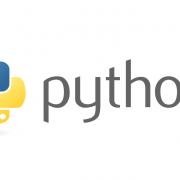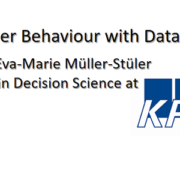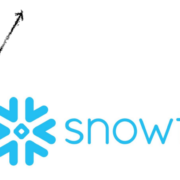Interview – Python as productive data science environment
 Miroslav Šedivý is a Senior Software Architect at UBIMET GmbH, using Python to make the sun shine and the wind blow. He is an enthusiast of both human and programming languages and found Python as his language of choice to setup very productive environments. Mr. Šedivý was born in Czechoslovakia, studied in France and is now living in Germany. Furthermore, he helps in the organization of the events PyCon.DE and Polyglot Gathering.
Miroslav Šedivý is a Senior Software Architect at UBIMET GmbH, using Python to make the sun shine and the wind blow. He is an enthusiast of both human and programming languages and found Python as his language of choice to setup very productive environments. Mr. Šedivý was born in Czechoslovakia, studied in France and is now living in Germany. Furthermore, he helps in the organization of the events PyCon.DE and Polyglot Gathering.
On 26th June 2018 he will explain at the Python@DWX conference why “Lifelong Text Hackers Use Vim and Python”. Insert the promotion code PY18science to unlock your 10% discount on all tickets. More info and tickets on python-con.com.
Data Science Blog: Mr. Šedivý, how did you find the way to Python as your favorite programming language?
Apart from traditional languages taught at school (Basic, Pascal, C, Java), some twenty years ago I learned Perl to hack a dynamic web site and used it to automate my daily tasks. Later I used it professionally for scientific calculations in the production. This was later replaced by Python, its newer versions and more advanced libraries. Nowadays Python has almost completely replaced Perl as my principal language and I use Perl just to hack some command line filters and to impress colleagues.
Data Science Blog: Python is one of the most popular programming language for data scientists. This is remarkable as it is originally not designed for doing data science with it. What made it a competitor to languages like R or Julia?
Python is the most powerful programming language that is still legible. This appeals to data scientists who can enter each line interactively, and immediately see what happens, because each line actually does something. They can inspect their data easily and build automating systems to process their data transparently.
Data Science Blog: Is there anything you could do better with another programming language?
Sometimes I’m playing with some functional languages that would allow me to write code that is easier to test and parallelize.
Data Science Blog: Which libraries are the most important ones for your daily business?
The whole Pandas ecosystem with Numpy and Scipy. Matplotlib for plots, PyTables and Psycopg2 for storage. I’m also importing a few async libs for webservices and similar network-based software.
I also enjoy discovering the world of Unicode and Timezones – both of them are the spots where the programmers absolutely have to obey the chaotic reality of the outside world.
Data Science Blog: Which editor do you use? And how to set it up as a productive environment?
I tried several editors and IDEs, but always came back to Vi or Vim. This is an extremely powerful editor that is around since over forty years, which was probably before most of today’s active developers learned to type. I’m using it for all text editing tasks, which I’m actually going to show in my talk at DWX [Lifelong Text Hackers Use Vim and Python]. Steep learning curve is not an argument against a tool you can grok during your entire career.
Data Science Blog: In your opinion: For all developers and data scientists, who are used to Java, Scala, R oder Perl, is Python easy to learn? Could it be too late to switch for somebody?
Python is a great general language that can be learned rapidly to a usable level. It’s different from the aforementioned languages. I remember my switching process from Perl to Python over ten years ago with a book “Perl to Python Migration”, which forced me to switch my way of thinking. From the question “Why do I have to import ‘re’ for regular expressions if Perl uses them natively?” to “Actually, I can solve this problem without regular expressions.”.



 https://unsplash.com/collections/28744506/work?utm_source=unsplash&utm_medium=referral&utm_content=creditCopyText
https://unsplash.com/collections/28744506/work?utm_source=unsplash&utm_medium=referral&utm_content=creditCopyText





Leave a Reply
Want to join the discussion?Feel free to contribute!